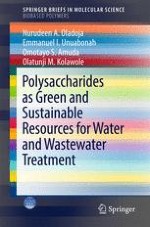
2017 | OriginalPaper | Buchkapitel
1. Operational Principles and Material Requirements for Coagulation/Flocculation and Adsorption-based Water Treatment Operations
verfasst von : Nurudeen A. Oladoja, Ph.D., Emmanuel I. Unuabonah, Ph.D., Omotayo S. Amuda, Ph.D., Olatunji M. Kolawole, Ph.D.
Erschienen in: Polysaccharides as a Green and Sustainable Resources for Water and Wastewater Treatment
Aktivieren Sie unsere intelligente Suche, um passende Fachinhalte oder Patente zu finden.
Wählen Sie Textabschnitte aus um mit Künstlicher Intelligenz passenden Patente zu finden. powered by
Markieren Sie Textabschnitte, um KI-gestützt weitere passende Inhalte zu finden. powered by